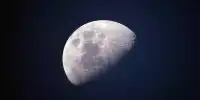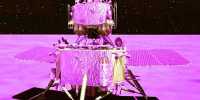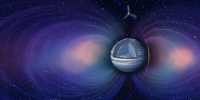It is uncommon for the sun to peek out at the cloudy sky – unless you are on Mars. Because of its thin, dry atmosphere, clouds often not formed on the Red Planet, so curiosity is a victory for science to capture it anyway. That they are “early”, especially high and unusually colorful scientists for Mars is quite excited. When they form on Mars, clouds usually appear above the equator during the coldest winter of the year, when Mars is away from the Sun in its orbit. One Martian year ago (two Earth years), however, scientists noticed that earlier in the year Curiosity created strangely intelligent clouds in the sky than expected.
Ready to capture them this year, they set this experienced rover to peek into the sky from January, and of course, this “first” cloud reappeared. In March, Curiosity created a bright, colorful display and dazzling nocturnal or night-burning cloud from the setting sun. Not only did they look stunning, they helped researchers understand what the cloud made of.

Water-ice clouds typically form more than 60 kilometers (37 miles) above Mars, but these clouds suggest much higher that they made up of frozen carbon dioxide, better known as dry ice. When seen just after sunset, ice crystals in the clouds scatter, illuminate, or glow. During the day, the bright clouds are to very thin and intelligent, but as the sun descends below the horizon, its light is reflected by the high-altitude clouds and the clouds continue to illuminate against the dark sky.
Curiosity’s black and white images make it even easier to see the strangely scattered structure of these clouds from its navigation cameras. As the suns descend below their height, they become brighter which helps scientists determine their height. The most interesting of all is the iridescent “Mother of Pearls” cloud, which is shining with blue, red and green colors. Mark Lemmon, an atmospheric scientist with the Space Science Institute, said in a statement, “If you see a brightly colored pastel set cloud, it’s almost identical to the size of the cloud particles.” “This usually happens after the clouds are formed and all grow at the same rate.”













